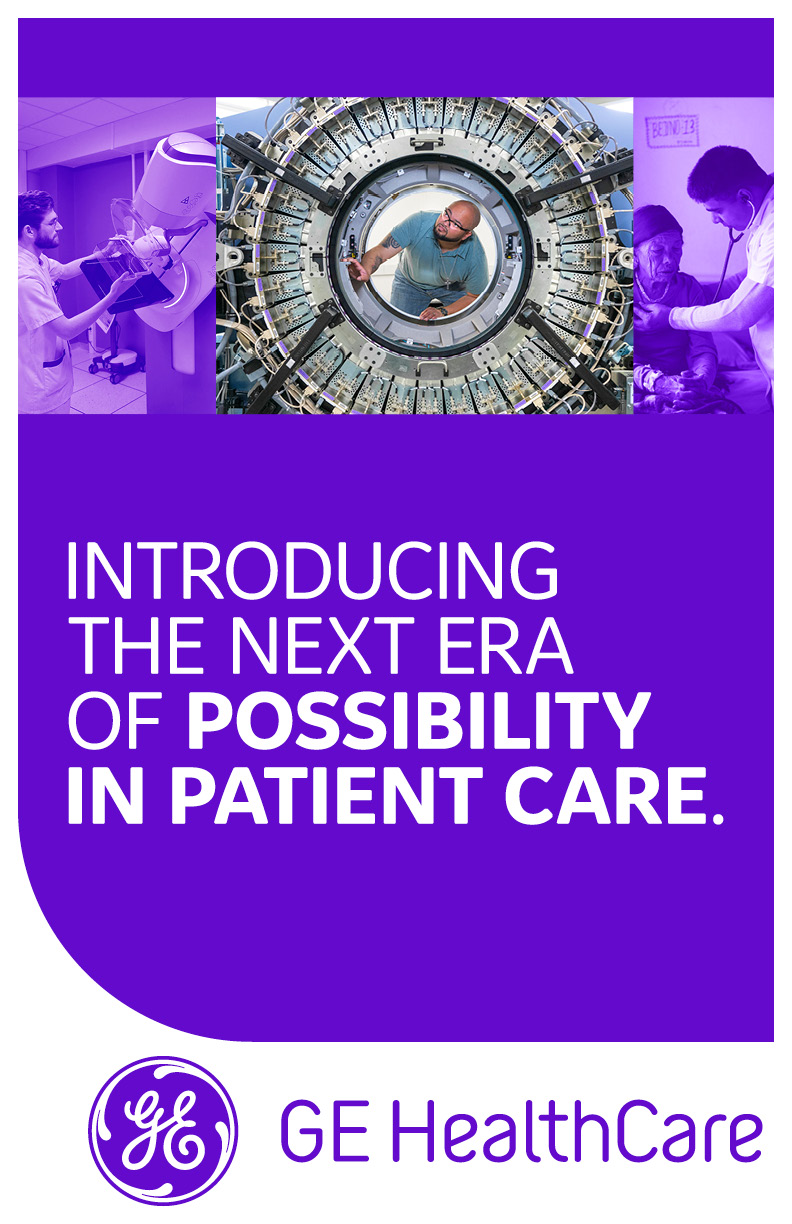With a new logo and color, the standalone company will retain its heritage of trust and innovation while shifting to a more focused healthcare identity.
For a company that’s been around for 130 years, as GE has, the business’s name is more than a calling card — it’s an identity linked to more than a century of innovation. For the GE team members who innovate many of the world’s most advanced medical devices and pharmaceutical diagnostics, it speaks to a mission. For the millions of doctors and patients, the GE name translates to trust and safety. Names matter.
So last year when GE announced its plan to split into three standalone companies focused on aviation, energy, and healthcare, a big question was what names would be chosen to carry on the GE legacy. Today GE’s healthcare business announced it will be called by the same name but will change its logo and primary color from blue to “Compassion Purple.” The business will trade on the Nasdaq stock exchange under the ticker GEHC after its planned spin-off in early 2023.
“We arrived at this decision by listening to the people who know us best: our team members and customers,” says Peter Arduini, president and CEO of GE Healthcare. “We learned that GE Healthcare is a name associated with innovation, trust, and reliability, and the monogram symbolises quality, safety, and trust. At the same time, we knew we had an opportunity to more closely align ourselves to our work supporting patients and providers.”
The choice of name and logo are a first step in the company’s rebrand, representing a promise to solve some of healthcare’s toughest challenges. “You’re going to see our brand evolve to be much more focused on the impact we drive as a healthcare company,” says Kristin Fallon, vice president of global brand and digital marketing for the healthcare company. “We are navigating this dynamic between heritage and change — and the desire to more clearly articulate and closely align to our purpose of serving the timeless, universal experience of health. The choice of the name and the choice of the colour reflects that.”
The company’s name will look a little different, moving to a softer font, and in place of GE’s classic blue color scheme, the healthcare business has chosen a soft purple to represent compassion. The “C” in the company’s name will be capitalized — “HealthCare” — to demonstrate the interdependency between better care and better health and the critical focus the company places on supporting both.
The rebranding signals the healthcare company’s renewed focus on delivering healthcare outcomes to patients and doctors. The company makes a wide range of medical imaging and monitoring equipment, pharmaceutical diagnostics, and digital solutions, including some of the most advanced ultrasounds, MRIs, and X-ray scanners on the market. But medicine is shifting rapidly to a more digital future where devices and the data they produce must be linked seamlessly with the processes that run hospitals, with physician offices, and with patients wherever they are.
“The new brand represents our passion for improving the quality of life for patients. We aspire to deliver more value for customers through solutions that help make hospitals more efficient, healthcare professionals more productive, therapies more effective, and patients healthier,” says Betty Larson, GE Healthcare’s chief people officer. “The brand represents our team’s promise — to each other, to patients, and to customers — to continue to innovate, advance our platforms, and find new ways to improve the delivery of care and the possibility of better health.”
Seen in that light, the creation of GE HealthCare as a standalone business is more than one of the largest medical technology spin-offs ever completed. The new company will be more agile and innovative, and its people and resources closer to patients and doctors, say its leaders. As an independent business, it will be able to reinvest its resources directly into products and services that patients and physicians are asking for and make its own choices on how to spend its money.
“We have the opportunity to drive greater strategic alignment, to recruit a board of directors aligned with our industry objectives and strategic priorities, and to direct our own capital allocation,” explains Larson. “And as a standalone company, we will be solely responsible for setting and delivering on the expectations of our shareholders. Building trust and transparency and cultivating an inclusive culture where everyone feels engaged — a sense of belonging and welcome to participate fully — will be imperative.”
Medicine will continue to migrate outside the four walls of the hospital, with technology connecting clinicians to patients and one another and offering relief from overcrowded emergency rooms and backed-up outpatient facilities. While the developed world reels from increased demand for tests and imaging procedures, emerging markets face a different challenge: how to get billions of people who currently lack access to medical care the treatment they need to live full and healthy lives. GE Healthcare’s software, medical devices, and pharmaceutical diagnostics will play a critical role in solving both.
“It’s our ‘Let’s go’ moment,” says Fallon. “What you see here is a transition away from an industrial identity, towards an identity that is distinctly healthcare. For our employees, this is an incredibly exciting moment to truly own and live our purpose in serving patients and providers.”
What’s not changing: the 9,000 field service engineers who help keep millions of GE medical devices running around the clock and the 5,000 software engineers building applications to make the delivery of care ever more seamless. In all, the new healthcare company will have some 51,000 employees around the globe who come to work each day with a mission to improve people’s health.







